Abstract
Horses infected with Babesia equi were previously identified by the presence of antibodies reactive with a merozoite surface protein epitope (D. P. Knowles, Jr., L. E. Perryman, L. S. Kappmeyer, and S. G. Hennager. J. Clin. Microbiol. 29:2056-2058, 1991). The antibodies were detected in a competitive inhibition enzyme-linked immunosorbent assay (CI ELISA) by using monoclonal antibody 36/133.97, which defines a protein epitope on the merozoite surface. The gene encoding this B. equi merozoite epitope was cloned and expressed in Escherichia coli. The recombinant merozoite protein, designated equi merozoite antigen 1 (EMA-1), was evaluated in the CI ELISA. Recombinant EMA-1 bound antibody from the sera of B. equi-infected horses from 18 countries. The antibody response to EMA-1 was then measured in horses experimentally infected with B. equi via transmission by the tick vector Boophilus microplus or by intravenous inoculation. Anti-EMA-1 antibody was detected 7 weeks post-tick exposure and remained, without reexposure to B. equi, for the 33 weeks of the evaluation period. The data indicate that recombinant EMA-1 can be used in the CI ELISA to detect horses infected with B. equi.
Full text
PDF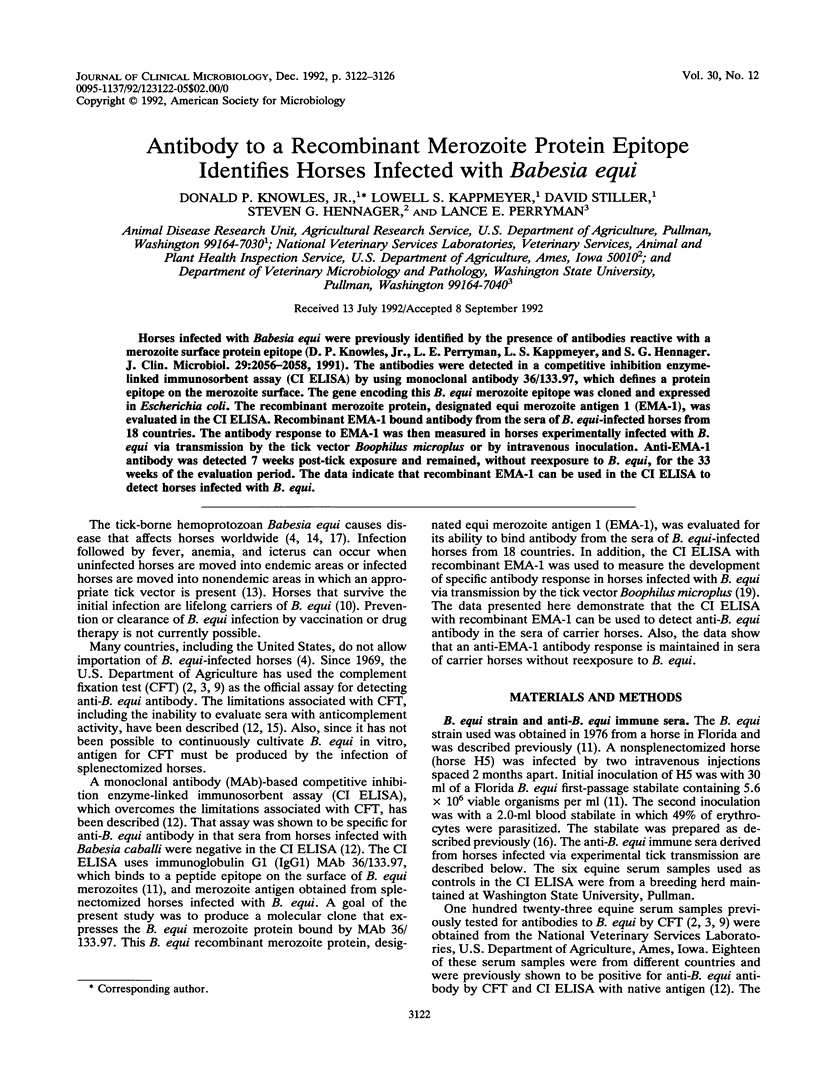
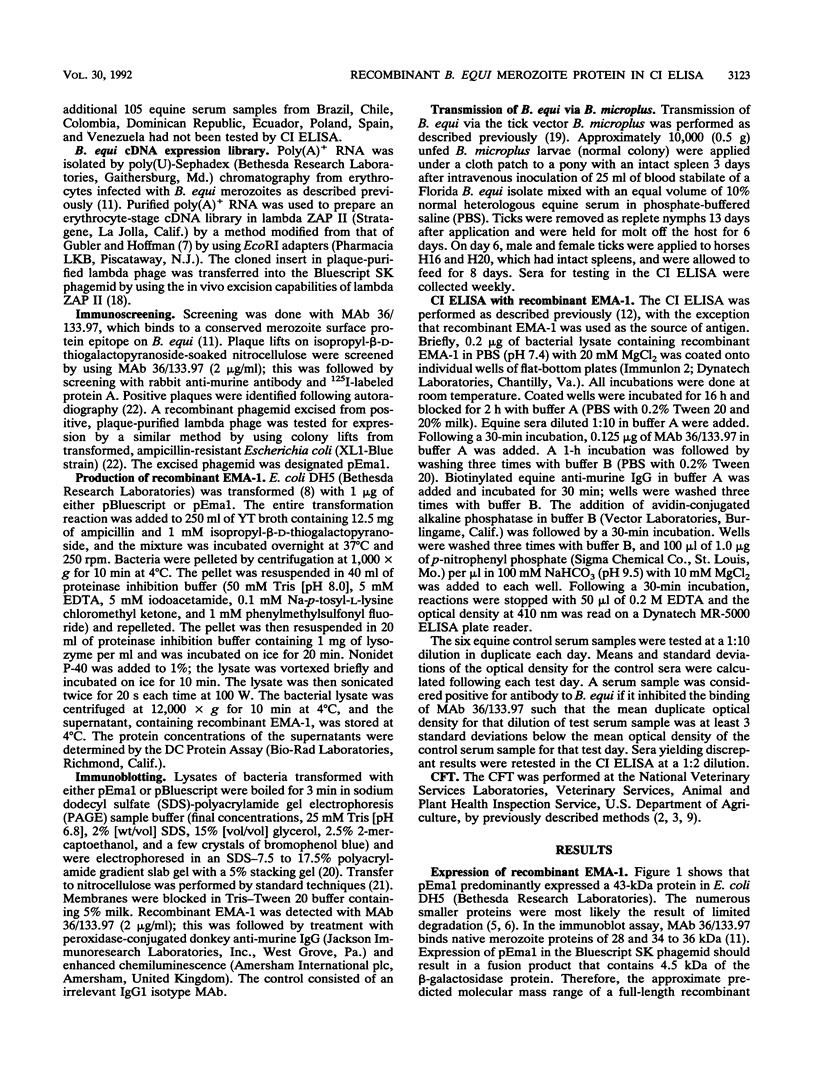
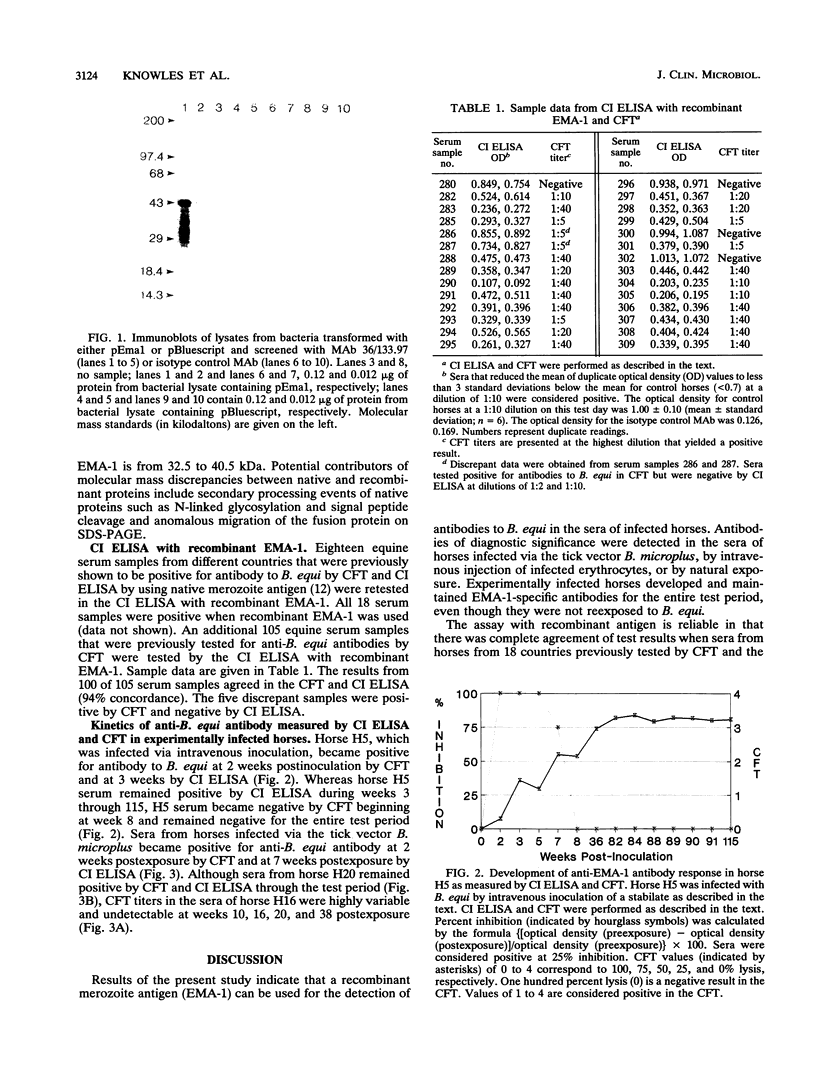
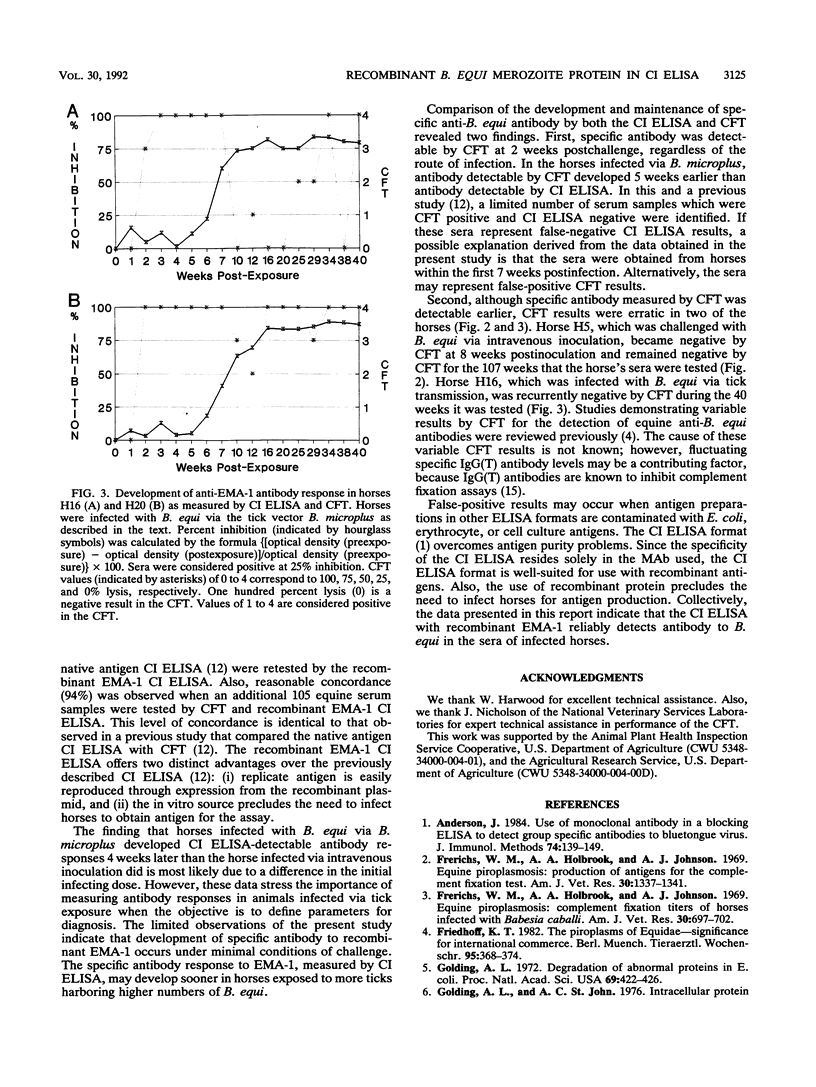
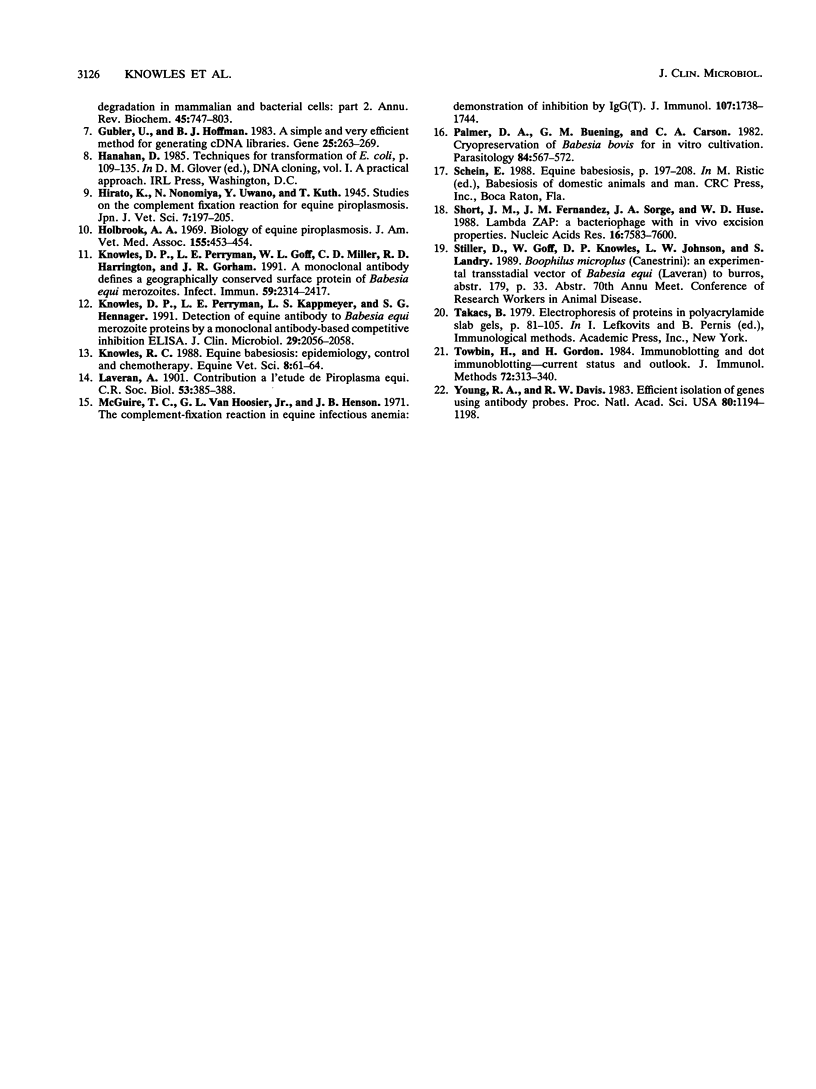
Images in this article
Selected References
These references are in PubMed. This may not be the complete list of references from this article.
- Anderson J. Use of monoclonal antibody in a blocking ELISA to detect group specific antibodies to bluetongue virus. J Immunol Methods. 1984 Nov 16;74(1):139–149. doi: 10.1016/0022-1759(84)90375-2. [DOI] [PubMed] [Google Scholar]
- Frerichs W. M., Holbrook A. A., Johnson A. J. Equine piroplasmosis: complement-fixation titers of horses infected with Babesia caballi. Am J Vet Res. 1969 May;30(5):697–702. [PubMed] [Google Scholar]
- Frerichs W. M., Holbrook A. A., Johnson A. J. Equine piroplasmosis: production of antigens for the complement-fixation test. Am J Vet Res. 1969 Aug;30(8):1337–1341. [PubMed] [Google Scholar]
- Friedhoff K. T. Die Piroplasmen der Equiden--Bedeutung für den internationalen Pferdeverkehr. Berl Munch Tierarztl Wochenschr. 1982 Oct 1;95(19):368–374. [PubMed] [Google Scholar]
- Goldberg A. L. Degradation of abnormal proteins in Escherichia coli (protein breakdown-protein structure-mistranslation-amino acid analogs-puromycin). Proc Natl Acad Sci U S A. 1972 Feb;69(2):422–426. doi: 10.1073/pnas.69.2.422. [DOI] [PMC free article] [PubMed] [Google Scholar]
- Gubler U., Hoffman B. J. A simple and very efficient method for generating cDNA libraries. Gene. 1983 Nov;25(2-3):263–269. doi: 10.1016/0378-1119(83)90230-5. [DOI] [PubMed] [Google Scholar]
- Holbrook A. A. Biology of equine piroplasmosis. J Am Vet Med Assoc. 1969 Jul 15;155(2):453–454. [PubMed] [Google Scholar]
- Knowles D. P., Jr, Perryman L. E., Goff W. L., Miller C. D., Harrington R. D., Gorham J. R. A monoclonal antibody defines a geographically conserved surface protein epitope of Babesia equi merozoites. Infect Immun. 1991 Jul;59(7):2412–2417. doi: 10.1128/iai.59.7.2412-2417.1991. [DOI] [PMC free article] [PubMed] [Google Scholar]
- Knowles D. P., Jr, Perryman L. E., Kappmeyer L. S., Hennager S. G. Detection of equine antibody to Babesia equi merozoite proteins by a monoclonal antibody-based competitive inhibition enzyme-linked immunosorbent assay. J Clin Microbiol. 1991 Sep;29(9):2056–2058. doi: 10.1128/jcm.29.9.2056-2058.1991. [DOI] [PMC free article] [PubMed] [Google Scholar]
- McGuire T. C., Van Hoosier G. L., Jr, Henson J. B. The complement-fixation reaction in eguine infectious anemia: demonstration of inhibition by IgG (T). J Immunol. 1971 Dec;107(6):1738–1744. [PubMed] [Google Scholar]
- Palmer D. A., Buening G. M., Carson C. A. Cryopreservation of Babesia bovis for in vitro cultivation. Parasitology. 1982 Jun;84(Pt 3):567–572. doi: 10.1017/s0031182000052835. [DOI] [PubMed] [Google Scholar]
- Short J. M., Fernandez J. M., Sorge J. A., Huse W. D. Lambda ZAP: a bacteriophage lambda expression vector with in vivo excision properties. Nucleic Acids Res. 1988 Aug 11;16(15):7583–7600. doi: 10.1093/nar/16.15.7583. [DOI] [PMC free article] [PubMed] [Google Scholar]
- Towbin H., Gordon J. Immunoblotting and dot immunobinding--current status and outlook. J Immunol Methods. 1984 Sep 4;72(2):313–340. doi: 10.1016/0022-1759(84)90001-2. [DOI] [PubMed] [Google Scholar]
- Young R. A., Davis R. W. Efficient isolation of genes by using antibody probes. Proc Natl Acad Sci U S A. 1983 Mar;80(5):1194–1198. doi: 10.1073/pnas.80.5.1194. [DOI] [PMC free article] [PubMed] [Google Scholar]



